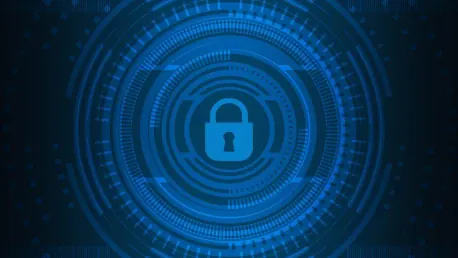The Latin America and Caribbean regions are facing an unprecedented surge in cyberattacks, necessitating a multifaceted approach to cybersecurity. As digital economies in these regions grow, so does the sophistication and frequency of cyber threats. This article explores the various strategies and measures that can be implemented to bolster cybersecurity defenses.
Understanding the Cyber Threat Landscape
Rising Incidence of Cyberattacks
Cybersecurity professionals in Latin America and the Caribbean are grappling with a significant increase in cyber threats. Data from the International Information System Security Certification Consortium’s (ISC2) Scam Defence 2024 seminar reveals a staggering 137 billion attacks in the first half of 2024 alone, marking a 50 percent increase from the previous year. This alarming trend underscores the urgent need for robust cybersecurity measures. The rapid digitalization of economies in this region has exposed numerous vulnerabilities, making it a fertile ground for cybercriminals who target both infrastructure and individuals.
The surge in cyberattacks is not just a reflection of the growing digital landscape but also illustrates the evolving tactics of cyber adversaries. Hackers are no longer solely focused on breaching technological systems; they are employing more sophisticated techniques that manipulate processes and exploit human vulnerabilities. Social engineering methods, like phishing and smishing, have become alarmingly common. These attacks deceive individuals into revealing sensitive information through fake emails and SMS text messages. The diversity in hacking methods necessitates a comprehensive defense strategy that addresses not only technological safeguards but also process improvements and heightened human awareness.
Diverse Nature of Hacking
Hacking is not confined to breaching technological systems; it also involves manipulating processes and exploiting human vulnerabilities. Social engineering techniques like phishing and smishing are increasingly common, highlighting the need for comprehensive defenses that address technology, processes, and human factors. ISC2 regional president Anthony Peyson emphasizes the importance of understanding these diverse hacking methods to develop effective countermeasures. Cybercriminals often deploy mixed tactics, starting with technological breaches and then leveraging manipulated processes or tricked individuals to maximize damage.
The complexity of modern hacking underscores the necessity for a multifaceted defense approach. Beyond securing networks and systems, organizations must invest in training employees to recognize and resist social engineering tactics. This dual-pronged approach ensures that even if a technological barrier is breached, the human element does not become the Achilles heel. Practical measures such as regular phishing simulation tests, mandatory cybersecurity training sessions, and robust protocols for identifying and reporting suspicious activities can significantly mitigate the risks. Additionally, continuous process audits and updates to security protocols help in maintaining a dynamic defense against evolving cyber threats.
Economic Impact and the Need for Collaboration
Protecting the Digital Economy
Gabriel Nunez, Cybersecurity and Data Protection Officer for Huawei Latin America and the Caribbean, projects that the digital economy in these regions could grow from $3.6 trillion in 2020 to $18.8 trillion by 2030. This potential growth underscores the critical need for robust cybersecurity frameworks to protect economic development. Nunez draws an analogy to traffic regulation, arguing that effective cybersecurity requires a collaborative approach involving government regulation, standard adherence by manufacturers and vendors, and user compliance. The sheer scale of projected economic growth necessitates preemptive measures to safeguard digital infrastructures from the looming cyber threats.
The potential economic impact of cyber threats in these burgeoning digital economies is profound. A single successful cyberattack can result in significant financial losses, erode consumer trust, and cause a cascading effect on related industries. Ensuring a fortified digital economy involves creating a resilient cybersecurity infrastructure that integrates transparent guidelines, rigorous standards, and consistent enforcement. The alignment of policies across governments, industries, and individual users forms the backbone of an effective cybersecurity strategy. By mandating minimum security standards for hardware and software vendors and fostering public-private partnerships, the region can erect a formidable defense against cyber threats.
Global and Regional Collaboration
The trend towards global and regional collaboration in cybersecurity is evident. Digital nation strategies released by 170 countries and the incorporation of AI in national strategies by over 60 nations reflect a growing commitment to cybersecurity. Additionally, the UN’s draft Convention against Cybercrime aims to criminalize and prosecute key cybersecurity crimes across member states, highlighting the importance of international cooperation. Cyber threats are not confined by geographic borders, making global and regional alliances essential in combating this pervasive menace.
With cybercriminals operating on an international scale, it is imperative for nations to collaborate and share intelligence to effectively counter these threats. The collective efforts of multiple countries can vastly improve the detection, deterrence, and disruption of cybercriminal activities. Regional cooperation initiatives, such as the Caribbean Cybersecurity Alignment Project, aim to synchronize cybersecurity policies and practices among neighboring countries, enhancing regional defense mechanisms. Participation in international frameworks and conventions provides local cybersecurity experts access to a broader array of resources, intelligence, and expertise, facilitating more effective threat responses and deterrence mechanisms.
Local Strategies for Strengthening Cybersecurity
Benchmarking and Standards
Caribbean nations are encouraged to benchmark against the Global System for Mobile Communications Association’s (GSMA) Network Equipment Security Assurance Scheme (NESAS) and adopt the Mobile Cybersecurity Knowledge Base (MCKB). These standards provide a framework for ensuring the security of mobile networks and devices, which are critical components of the digital economy. Implementing such benchmarks offers structured guidelines for securing telecommunications infrastructure, ensuring that network providers adhere to best practices in cybersecurity and resilience.
Adopting these internationally recognized frameworks helps in aligning local cybersecurity measures with global standards, creating a unified front against cyber threats. Regular audits, certifications, and compliance assessments based on these standards ensure ongoing adherence and continuous improvement. The implementation of NESAS and MCKB helps in identifying potential vulnerabilities within mobile networks, enabling proactive measures to address and mitigate risks. Governments and industry stakeholders must work in concert to institutionalize these benchmarks, integrating them into national cybersecurity policies and business practices to enhance overall network security in the region.
Basic Cybersecurity Measures
Anish Bachu, Manager of the Trinidad and Tobago Cybersecurity Incident Response Team (TTCSIRT), emphasizes the importance of basic cybersecurity measures. Often, minor lapses can lead to significant compromises. Effective defenses rely heavily on implementing good backups, strong network segmentation, and maintaining updated antivirus and firewall systems. TTCSIRT’s proactive measures to act swiftly against phishing attempts serve as operational examples of effective local cybersecurity strategies. Even basic security protocols, if diligently executed, can form a formidable line of defense against a variety of cyber threats.
The cornerstone of any cybersecurity framework is the consistent application of fundamental security practices. Regular backups ensure data recovery in case of a ransomware attack, while network segmentation minimizes the impact of breaches, confining threats to isolated sections of the network. Keeping antivirus software and firewalls updated guards against the latest strains of malware and cyber exploits. Additionally, creating a security-first culture within organizations, where every employee is aware of their role in maintaining cybersecurity, amplifies the effectiveness of these measures. Incident response teams, like TTCSIRT, play a vital role in swiftly addressing breaches, minimizing damage, and restoring compromised systems.
Enhancing User Awareness and Reporting Mechanisms
Improving User Awareness
Improving user awareness is crucial in combating cyber threats. Educating the public about the risks and signs of phishing and other social engineering attacks can significantly reduce the success rate of these threats. Public awareness campaigns and training programs can empower individuals to recognize and respond to suspicious activities. For instance, incorporating cybersecurity education into the curriculum in schools and universities can instill good practices from a young age, creating a generation well-versed in recognizing and thwarting cyber threats.
Awareness is the first line of defense against social engineering attacks. Providing the public with the knowledge to identify and report suspicious activity prevents cybercriminals from exploiting human vulnerabilities. Regularly updating users on the latest tactics employed by cybercriminals, through seminars, webinars, and public bulletins, keeps the information relevant and practical. Collaborations with community organizations, businesses, and educational institutions to disseminate this information widely bolsters the collective resilience against cyber threats. Tailoring these educational initiatives to various demographic groups ensures that everyone, from teenagers to senior citizens, understands the importance of cybersecurity hygiene.
Transparent Reporting Mechanisms
Creating transparent and accessible reporting mechanisms for suspicious digital activities is essential. Companies and individuals need clear channels to report phishing attempts and other cyber threats. This dual approach of improving user awareness and establishing robust reporting mechanisms can bolster defenses at both the conglomerate and individual levels, ensuring swift action against potential threats. Reporting mechanisms should be straightforward and user-friendly, encouraging timely submissions of suspicious activities to relevant authorities or cyber response teams.
A well-established reporting system enables swift intervention, limiting the reach and impact of cyber threats. It fosters a proactive security culture, where users feel responsible and equipped to act against cyber risks. By setting up hotlines, dedicated email addresses, and online platforms for reporting cyber incidents, organizations and governments can facilitate prompt responses. Integrating these reports into a centralized incident response system ensures a coordinated approach to threat mitigation and resolution. Such mechanisms not only address immediate threats but also contribute to broader cybersecurity intelligence, helping to predict and prepare for future attacks based on reported data.
Conclusion
The Latin America and Caribbean regions are currently grappling with an unprecedented surge in cyberattacks. This alarming trend necessitates a multifaceted approach to cybersecurity to effectively combat these threats. As the digital economies in these regions continue to grow, the sophistication and frequency of cyber threats likewise escalate. This situation underscores the urgent need for comprehensive strategies aimed at bolstering cybersecurity defenses. Among the measures that can be implemented are enhanced training programs for IT professionals to stay ahead of emerging threats, the adoption of advanced security technologies, and the development of robust cybersecurity policies and regulations. Additionally, fostering regional and international collaborations can improve information sharing and enhance collective response capabilities. By integrating these strategies, the Latin America and Caribbean regions can better safeguard their digital infrastructures and protect against the evolving landscape of cyber threats. This proactive stance is vital for maintaining the integrity and security of their burgeoning digital economies.









